
The two most impressive new cars of 1966 both came from rival General Motors divisions, and both shared the same GM E-body shell. Yet, they both looked and were quite different, one a body-on-frame car with a conventional front-engine/RWD powertrain and the other unitized with front-wheel drive. Let’s take a closer look at the 1966 Buick Riviera and Oldsmobile Toronado and see how they compared, beginning with their structure and engineering.
The convoluted story of how a sporty “flame-red car” drawn by designer Dave North intersected with an Oldsmobile Advanced Engineering FWD project to become a big personal luxury coupe has been told many times, and it’s not my intention to repeat it here. What I want to focus on instead is how that big FWD luxury coupe — the 1966 Oldsmobile Toronado — related to and compared with the 1966 Buick Riviera.

Although it’s not dated, the above photo was taken in the GM Body Development Studio during the development of these cars — my guess would be sometime in 1963. Here are the two cars represented by the clay model as they appeared in their final forms:

(The Coyote Classics listing says the above car is Silver Green, but it doesn’t look very green — I don’t know if that’s a trick of the lighting or if the specified color is wrong. Pro tip: If you’re selling a classic car, include the actual paint and trim codes from the trim plate!)

One of the goals of the E-body program was to reduce the per-unit cost of future generations of the Buick Riviera by spreading the major tooling costs across multiple models. Each automotive body shell was a complex welded assembly of thousands of individual parts, not including the exterior sheet metal, so sharing those parts — and, more importantly, the tooling used to manufacture them — was essential to keeping the costs of each car within reason. GM divisions each had their own tooling budgets, which they could use to individualize their versions of the shared body.

The Toronado and Riviera shared much of their inner body structure, as well as their A-pillars, roof upper, inner door structures, and windshields, door glass, and backlights. However, they each had different exterior sheet metal, including different hoods, fenders, door outers, and decklids.
In profile, the similarities were evident:


From head on, however, the Toronado and Riviera looked quite different, although both were very imposing:


Also, while both cars had concealed headlamps, the Toronado and Riviera each handled them differently. The Toronado lights didn’t look very good in the raised position and were vacuum-operated, making them slow to open or close and inevitably troublesome in later life.

The Riviera headlights swiveled into position via an electric motor rather than by manifold vacuum.

From the rear three-quarter view, the Toronado and Riviera were clearly two variations on the same semi-fastback “monocoque” theme. (In this case, the “monocoque” referred not to the structural design, but to the fact that there was no separation between the roof and body sides.) However, the sheet metal was so different that it was hard to see the structural resemblance.


From the rear, the average person might have said you were crazy if you explained that Toronado and Riviera shared the same body shell:


However, the dimensions were suggestive:
| Dimension | Riviera | Toronado |
|---|---|---|
| Overall Length | 211.0 in. | 211.2 in. |
| Wheelbase | 119 in. | 119 in. |
| Track, front | 63.5 in. | 63.5 in. |
| Track, rear | 63.0 in. | 63.0 in. |
| Overall width | 78.5 in. | 78.8 in. |
| Overall height, unladen | 52.8 in. | 53.4 in. |
| Curb weight, base | 4,316 lb | 4,496 lb (4,551 lb Deluxe) |
(All of these dimensions are from the official specs Buick and Oldsmobile submitted to the Automobile Manufacturers Association (AMA). The Riviera dimensions in the AMA specifications differed slightly from the ones in the 1966 Buick brochure — I’m not sure why.)
Such cleverly disguised structural commonality was a GM strong suit in this era — General Motors had been doing this sort of thing since the 1930s, and had gotten very good at it. However, the cars to which these tricks were usually applied tended to be very similar in mechanical layout. Looking underneath the Toronado and Riviera revealed some dramatic differences:


The Toronado, of course, was FWD, while the Riviera was driven by its rear wheels, but the differences were more extensive than that, beginning with the frames. The Toronado was unitized, meaning that its structural strength came from the body shell itself. However, like 1960 and later full-size Chrysler unibody cars (or the old Citroen Traction Avant), it had a separate partial frame that carried the powertrain and front suspension:


Unlike Chrysler unibodies, which only extended back to the cowl, this partial frame extended under the passenger compartment to terminate at the front spring shackles of the rear suspension:

Like a Chrysler, the Toronado had front torsion bar springs, whose rear mounts were carried on a crossmember:

Although the corporation (and Car and Truck Group VP Ed Cole) had wanted Buick to share the complete Toronado FWD package, Buick management had been adamant about retaining RWD. The eventual solution was for Buick to adapt the cruciform frame and chassis from the 1963–1965 Riviera to the new body, extending the frame’s center section to accommodate the longer wheelbase of the 1966 cars. (As Paul has previously explained, being able to do this was one of the features of the GM X-frame.)

Fisher Body designed an essentially modular underbody structure, allowing the Riviera and Toronado to share their sills (the inner structure of the rocker panels) and portions of the floorpan while still accommodating their different frames and the Riviera driveshaft. Since the X-frame was a true self-supporting frame (not a deliberately flexible perimeter frame or subframe), adding this to the unitized E-body shell made the Riviera structure significantly stiffer than the Toronado.
Where the Toronado had torsion bars in front and a beam axle on single leaf springs in back, with four shock absorbers …

… the Riviera had coil springs all around, with a conventional live axle located by three trailing arms and a Panhard rod, as in 1965. The big change between 1965 and 1966 was that the rear coils were now atop the axle rather than on the lower arms. A heavy-duty suspension was optional for a few dollars extra, and was included as part of the Gran Sport package.

As with most contemporary Buick and Oldsmobile full-size cars, the Toronado and Riviera used different engines, albeit of the same nominal 425 cubic inch displacement. The Toronado version of the recently redesigned Rocket V-8 had SAE gross ratings of 385 hp and 475 lb-ft of torque:

The 1966 Riviera used the last of the Buick “Nailhead” series, normally rated at 340 gross horsepower and 465 lb-ft of torque (hence the “Wildcat 465” name) with a single Rochester Quadrajet four-barrel carburetor:

In previous years, Buick had offered a Super Wildcat version of this engine, with two Carter four-barrel carburetors and an extra 20 hp. For 1966, this initially became a dealer-installed option, priced at $254.71, although it conveniently found its way onto most (though not all) of the press cars. Starting in March 1966, the Super Wildcat engine again became a factory option, although only 179 buyers ordered it that way.

Both cars used three-speed Turbo Hydra-Matic transmission (which Buick still called Super Turbine 400), with a variable-pitch stator. However, the Toronado version, known as the TH425, separated the torque converter from the transmission, driving it with a chain, and reversed the transmission’s rotation so that it could send power forward rather than back, with a small planetary differential next to the engine. (Buick actually designed the Toronado differential and driveshafts, although Buick didn’t use them until 1979.) The right-hand driveshaft passed under the engine oil pan; it’s foreshortened in the illustration below.

While the Toronado offered no performance options in 1966, the Riviera again offered a Gran Sport package, priced at $176.82. In addition to the obligatory ornamentation and some engine dress-up, this included a heavy-duty suspension, Positraction (with either a 3.23 or 3.42 axle ratio), freer breathing exhaust, and a modified transmission governor with higher shift points. The GS entitled you to order (but didn’t include) the quicker-ratio power steering, which was $121.04 extra, but required only three turns lock-to-lock, compared to 3.4 for the Toronado. Both cars had rather large turning circles

How did they perform? Road tests of the Toronado were all over the map in terms of acceleration — a spread of over 2 seconds in 0 to 60 mph times and a full second through the quarter mile — suggesting that contemporary testers struggled to extract the best dragstrip-type performance from a heavy FWD car that was very reluctant to spin its wheels. As for the Riviera, contemporary magazines almost all seemed to have tested the GS model (typically with the optional 3.42 axle ratio), and almost always with the dual-4V Super Wildcat engine. Motor Trend was a rare exception on the latter point, testing a GS with the standard 340 hp engine and 3.21 axle, so we’ll use their figures for comparison.
| Acceleration | Riviera GS | Toronado |
|---|---|---|
| 0–30 mph | 3.1 secs. | 3.4 secs. |
| 0–45 mph | 5.2 secs. | 5.9 secs. |
| 0–60 mph | 8.6 secs. | 9.5 secs. |
| Passing, 40–60 mph | 4.5 secs., 330 ft. | 5.1 secs., 372 ft. |
| Passing, 50–70 mph | 5.0 secs., 440 ft. | 5.6 secs., 492 ft. |
| Standing start ¼ mile | 16.4 secs. at 84 mph | 17.2 secs. at 82 mph |
| Source | M/T, Feb. 1966 | M/T, Dec. 1965 |
Some Toronado test cars did better than this — the distinguished British magazine Autocar, testing a LHD Toronado import on a somewhat damp test track, managed 0 to 60 mph in 8.7 seconds, the quarter mile in 16.9 at 88 mph, and an observed two-way average top speed of 127 mph — but the Riviera was over 200 lb lighter, and thus consistently quicker, even with the single-carburetor engine. On the other hand, the 1966 Riviera was about 200 lb heavier than the 1965, so the Riviera wasn’t as quick as its predecessor.

Oldsmobile had done a good job of preventing torque steer with FWD and such a massive engine, and the resistance to wheelspin that hampered the Toronado in dragstrip starts contributed to outstanding wet-weather traction. The Toronado also had fine straight-line stability. The Riviera was less confident in the wet, but the firmer Riviera GS could be tossed around a bit on dry roads in a way the Toronado didn’t encourage. However, even the GS would have really benefited from more steering feel, stickier tires, and firmer shock absorbers. Both Buick and Oldsmobile remained allergic to shock damping, favoring a soft ride on smooth roads at the cost of nervous jitters on uneven surfaces, especially with stiffer springs. (Surprisingly, the 1966 Toronado suspension was a lot stiffer than the standard Riviera, although not as stiff as the Riviera GS.)

For all of the GM divisions’ obvious engineering muscle, their attitude towards brakes remained firmly in the “What, us worry?” camp. Although Chevrolet offered an excellent set of four-wheel disc brakes on the Corvette, both of these 4,400+ lb cars made do with finned drum brakes — cast iron all around for the Olds, aluminum in front and iron in the rear for the Buick — which were barely adequate.

Buick drum brakes had only about 5 square inches more effective lining area than the Toronado drums and had almost identical swept area, so while the Riviera had better-than-average brakes as drum-braked big cars went, its actual deceleration rates and stopping distances were mediocre. On the other hand, Toronado braking was borderline scary: With so much weight on the nose, the Toronado would quickly overheat the front brakes while abruptly locking the rear wheels, making the Toronado a real handful in a panic stop from higher speeds.

All of this engineering detail was probably lost on many buyers. For most people other than car magazine editors, these were first and foremost stylish and expensive luxury specialty cars akin to the Ford Thunderbird. Tomorrow, we’ll look at how the Riviera and Toronado interiors compared.
Related Reading
1966 Buick Riviera Versus 1966 Oldsmobile Toronado – Closely Related, Yet So Different (Part 2) (by me)
Curbside Classic: 1966 Oldsmobile Toronado – GM’s Deadly Sin #16 – Let’s Try A Different Position For A Change (by Paul N)
Curbside Classic: 1966 Buick Riviera – The Ultimate Bill Mitchell-Mobile? (by Paul N)
Vintage Review: 1966 Oldsmobile Toronado – Car And Driver Heads To Pikes Peak With The Newest From Olds (by GN)
Vintage Road Test: 1966 Oldsmobile Toronado – “Who’d Buy A Car Like That?” – Oldmobile’s Stylish, Innovative and Compromised GT (by Paul N)
Vintage Road & Track Review: 1966 Buick Riviera Gran Sport – Lighter and Faster Than The FWD Toronado (by Paul N)
Vintage Road and Track Review: 1966 Oldsmobile Toronado – Advanced and Regressive At The Same Time (by Paul N)
Vintage Road Test: 1966 Oldsmobile Toronado – Road Test Magazine Offers An Unfiltered Take On Oldsmobile’s Front Drive Flagship (by GN)
Curbside Classic: 1966 Oldsmobile Toronado – Personal Luxury, Oldsmobile Style (by J P Cavanaugh)
Out in Front: The Front-Wheel-Drive Oldsmobile Toronado, Part 1 (at Ate Up With Motor)



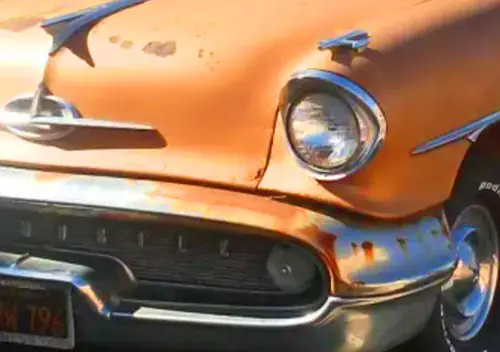
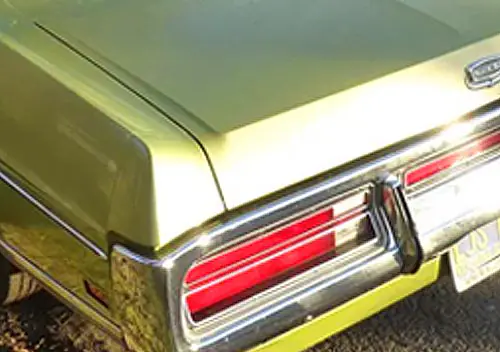
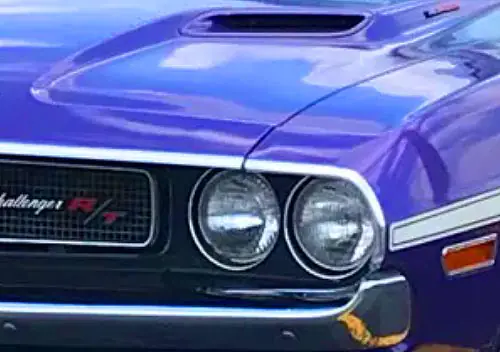


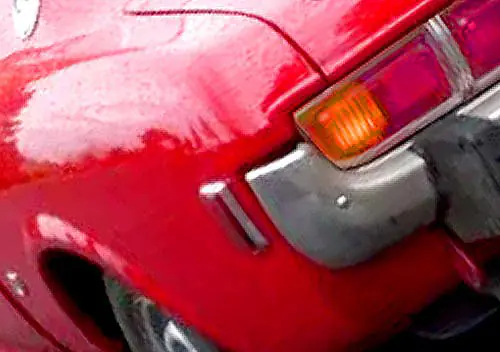

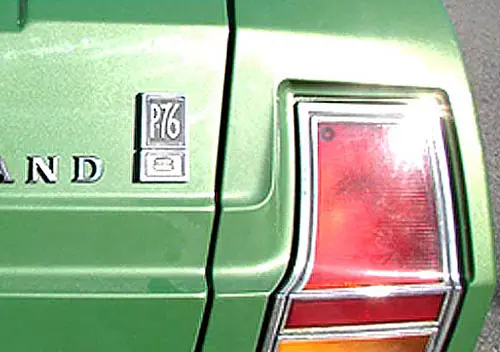
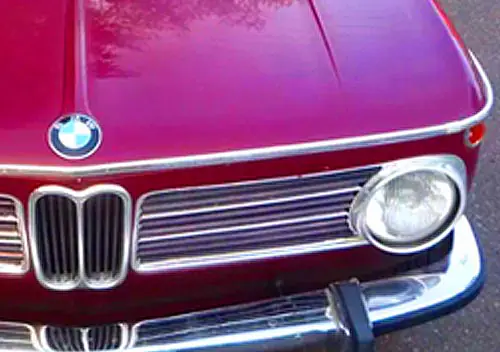


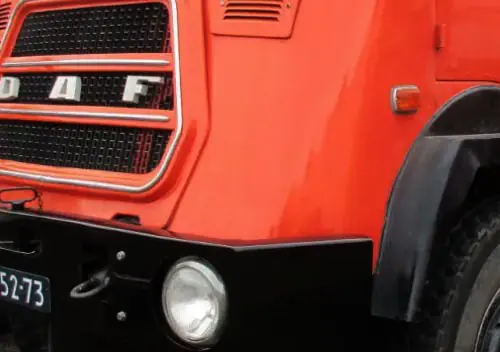
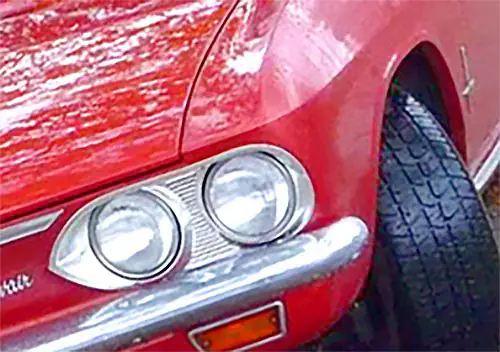
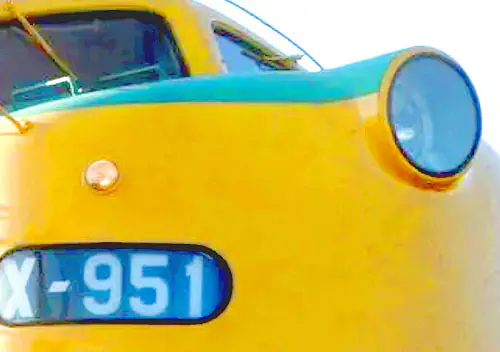
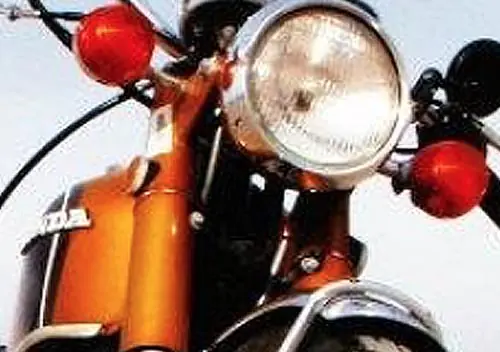
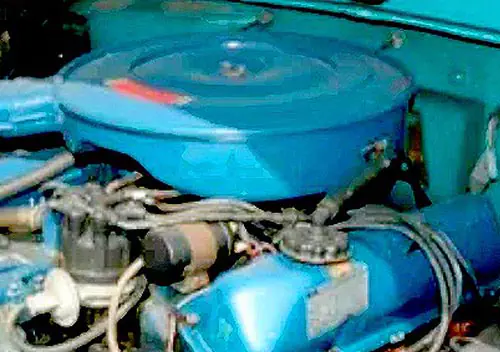
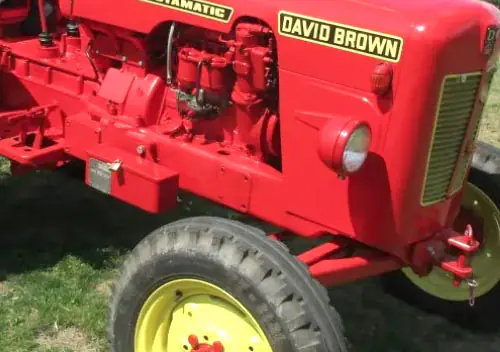


Very informative article. I will point out that sharing body shells across cars with widely disparate drivetrains was not unique to the E-body, however. GM demonstrated this with the Y-body cars from 1961-63. The F85 and Special used conventional front engine and trans with rear drive, the Tempest used the front engine with transaxle, and all three were based on a stretched Corvair platform that was originally designed for rear engine, rear drive.
That’s definitely true, although the Y-bodies achieved something of the opposite net effect: They looked very similar — too similar, really — especially in 1961–1962 cars, and the average person could easily assume they were the usual mildly facelifted brand variants, rather than that they had extensive mechanical differences.
Great reviews and comparison analysis. Seminal work here, and a successful one stop source. Even matching the view selection of both cars, for better comparison. Really impressive work!
Both cars, well before my time. When
hugebig cars were more socially acceptable. While attractive, I’ve always found the original Toronado, borderline obese. The oversized proportions remind me a great deal of the 1972 Lincoln Mark IV. A portly car, when it was introduced. The Riviera carries its heft better. But it is a step down from the dramatic, and more original, first gen version.The huge size added to the presence of both these cars. I presented a Photoshop here, I made a few years ago, making the argument a smaller Toronado would have looked tighter, and more muscular on the A-Body platform. Which it was originally designed for. Without all that embarrassing, and unnecessary heft. Same gret looks, without all that embarassing cellulite.
I know some folks here, love their barges, and land yachts. But I do think the Toronado body could have perhaps had a much more successful and worthy term and legacy, as a mid-sized genuine European-style luxury GT car. Rather than an impractical, oversized (obese) and niche PLC. A stronger legacy, the Toronado deserved. As it devolved into something quite grotesque.
Your squished Toro rather reminds me of the AMC AMX, such that I’m led to wonder if Dick Teague had musings similar to yours.
In reality, the cowl-to-axle dimension was pretty much fixed due to the front mid-engine layout with the transmission and most of the engine behind the differential, so it prolly couldn’t lose much if any length in that span, though shorter nose and tail overhangs may well have been feasible.
I’d like to think my ‘squished’ Toro, is actually more normally proportioned.
While the original is excessively long, and misproportioned.
Perhaps after viewing it for so long, the proportions of the original, appear normal to you?
It was originally planned to be smaller, for the A-Body.
Nice detailed look at these two siblings. I’ve already said my piece on the Toronado, and I felt it a bit unfortunate that the Riviera had to grow in size along with the Toro, as I was/am a real fan of its initial incarnation. Both of these were just ridiculously large.
Probably due to my earlier mistreatment of his ’63 Starfire, Dad nixed my borrowing his ’66 Toro, identical to this car. (Instead he financed my first wheels, a ’62 Impala Sport Coupe.)
If he had asked me I would have said make sure this whale has adequate front braking. As for styling, I much prefer the Riviera.
I still believe that the ’66 Riviera was one of the absolute best looking cars of all time. A real work of art, I should get a picture of one to place in my Bolt. I drove one from Ft. Lauderdale to Detroit and could not have imagined, then, reading about the design 59 years later. The wonderful article renewed my desire to have one, just to look at.
Oh, this is poorly timed. I am really itching to buy a ’66 Toronado right now, although I certainly don’t need it.
Still, I saw a ’66 Riviera at a local car show today, and I commented to my wife that it’s empirically (if that’s a thing when discussing aesthetic considerations) a better-looking car, but I still prefer the Toronado. (But I’ll still take my ’63 Riviera over either.)
FWIW, I gather updating a ’66 to use the ’67 front disc brakes is a pretty simple nut’n’bolt swap, IIRC including the steering knuckles/hub carriers in the swap.
Can anyone tell what the clay model in the very back of the studio became?
Why do the drums on the aqua Toronado look like aluminum? Did someone switch them with Buick’s?
You have to wonder if they chose those wheels just to look like a Cord’s or if they knew there were brake cooling issues. I notice there are wide openings in either side of the front bumper. Are there deflectors to channel air to the brakes? The first two years of FWD Eldorado wheelcovers also had large openings.
What a splendid idea, but alas no.
Speaking of Cord, it’s interesting to note the styling nod in the ’66 Toro’s slatted grille resembling the layer-cake nose louvers of the Cord, and later in the ’71-85 Toros’ blunt central nose sections more fully evoking the Cord’s famous “coffin nose”.
As was mentioned, GM was a master at making cars that shared a lot of corporate DNA look quite distinct. To me, the Toronado was more futuristic looking, and fell in line with Oldsmobile’s role as GM’s “tech” division. It was the evolution of the Futuramic styling of the late 1940’s. Buick gave the Riviera Motorama show car looks, with sleek simplicity and exceptionally clean styling. Yes they were big, but in comparison to the ’64 Cadillac discussed earlier, they weren’t considered to be particularly oversized by the buying public. The Riv and Toro were almost the equivalent of a Cadillac, the ’67 El Dorado would debut the next year, and to most people, they wouldn’t have as much appeal if they were smaller.
I had a ’66 Riviera that I absolutely loved and drove for six or seven years back in the mid 1990’s. The only things that keeps me from buying another one, is the high prices that these cars now command, and the 10 mpg. fuel economy. But I still find them very beautiful.
I say this a lot, but that was never Oldsmobile’s role, and GM most definitely did not try to assign that kind of identity to its divisions prior to the disastrous collapse of divisional autonomy in the Smith era of the 1980s. To the extent that Oldsmobile ever cultivated that image, it was brief and intermittent, and it depended on the tenor of the general manager and chief engineer, just as Pontiac’s “performance” image was something that Bunkie Knudsen and Pete Estes came up with because the division’s previous boring middle-class image had become moribund.
Weren’t Oldsmobile the first to offer the Hydramatic and the OHV V8? Aside from FWD and the Vista Cruiser, there were their diesels and a few minor options that escape me. I believe Hendry, the author of AQ’s 1972 history of Cadillac, lamented that Olds had became GM’s premier pioneering division instead of Cadillac. Perhaps it was never official, but just the way things turned out over time.
Each of the divisions had some innovations they decided to embrace and run with, and others they didn’t. This persistent idea of Oldsmobile being the “innovation division” or the “tech division” is simply a myth, and Maurice Hendry having repeated it doesn’t make it true. It’s an item of received wisdom not based in fact.
The number of things Buick ran with was at least as great as Oldsmobile: compound carburetion, Dynaflow, the finned aluminum front drums, the aluminum V-8, Dual Path Turbine Drive, the 90-degree V-6, Accu-Drive, and Max Trac, to name a few. Buick also developed the FWD differential for the Unitized Power Package in the Toronado and Eldorado, since Ed Cole ordered development split between Oldsmobile, Buick, and Cadillac.
All GM divisions had their own advanced engineering people and at least some budget for R&D, but a lot of this stuff came out of Engineering Staff or Research Laboratories programs. For instance, Oldsmobile didn’t invent Hydra-Matic — it started at Cadillac, in very nascent form, became an Engineering Staff project, and then was turned over to Detroit Transmission Division (which was later renamed Hydra-Matic Division). Oldsmobile was interested enough by about 1936 to throw some of their own resources at it, particularly in the area of road testing, and they essentially test-marketed the semiautomatic Automatic Safety Transmission that was the Engineering Staff group’s rough draft (a transmission that was manufactured by Buick, under a certain amount of duress and not at all happily), but it wasn’t developed by Olds, it wasn’t manufactured by them, and it was only exclusive to their cars quite briefly. Charles McCuen, Olds general manager in the late ’30s, deserves some credit for taking it seriously, but to extend that into this mythical idea of Oldsmobile as “the innovation division” even 25 years later is very silly.
First synchromesh manual transmission was Oldsmobile.
This is not true either. Synchro-Mesh was introduced on Cadillac and LaSalle for 1929. The concept was invented by an engineer named Earl A. Thompson, a rare example of an outside engineer successfully selling a home-grown design to one of the big Detroit automakers. Thompson then joined the Cadillac staff for a couple of years and then was the leader of the team that developed Hydra-Matic, which began at Cadillac and then moved to the corporate Engineering Staff.
The Toronado and Eldorado were fraternal twins in the drivetrain department, as both got the THM450 FWD transmission, but while the Olds had “only” 425 cubic inches on tap, the Eldorado got a 472 cubic inch Cadillac V8 that later grew to 500 cubic inches!
https://en.wikipedia.org/wiki/Cadillac_V8_engine#472_series
I always thought that the front rims on the Toronado/Eldorado twins looked vaguely truck like. Fun Fact: This engine and transmission combination also appeared in the GMC motorhome, GM’s ill-fated attempt to enter the RV market just before the OPEC oil embargo hit in 1973. Talk about bad timing!
https://en.wikipedia.org/wiki/GMC_Motorhome
I live in a hilly part of the continent, so for me brakes are a vitally important component of any car I buy. Putting drum brakes on a car as heavy (and front heavy) as a Toronado borders on criminal. GM knew these cars needed good brakes but instead they did what cost them less: drum brakes. I wonder how many accidents were caused by them.
Disc brakes were just coming into their own in the mid-60’s, and GM was a slow adopter of them (except for the Corvette). But Buick really had mastered the drum brake, and the general public would need some time to warm up to the idea of front discs…or 4 wheel discs. (Just as they had to warm up to the idea of 2-ply tires in the 60’s and FWD.)
Disc brakes were standard fitment on many cars by 65 including GM cars from other countries that were lighter and less powerful than the big GM US cars.
And, more to the point, the gigantic Ford Thunderbird and Lincoln Continental, which were in the same battleship-coupe weight class, had front discs in 1965 and stopped much better than the Toronado.
Lack of disc brakes was Detriot just being cheap bastards. And the complete lack of any sort of safety culture at the companies at that time.
Just blows my mind that none of these Detriot executives drove over to someplace close by like say the mountains of Pennsylvania for vacation. Saw how effing inadequate the brakes were outside of flat land Michigan and demanded better.
Thanks for this. I have always thought about these cars one at a time, but never considered them together as fraternal twins.
Both are beautiful examples of American automotive excellent in the big car elegance and style. If I had to choose one over the other it would be the Riviera.
Never knew this generation, “Riv” wasn’t “fwd”. Was the “new 67, Eldo” “fwd”?
Yup! The Eldorado was very closely related to the Toronado in structure and mechanical layout, and Cadillac actually developed some parts of the package for both cars, although their version arrived a year later. Cadillac of course used their own engines, but the transmission, differential, driveshafts, frame, and suspension are basically the same.
Great comparison. The Toronado and Eldorado were quite closely related but it’s amazing how the ’66 Riviera managed to be part of the same family but retain major features of previous generation Riviera, notably rear wheel drive and the ‘X’ frame.